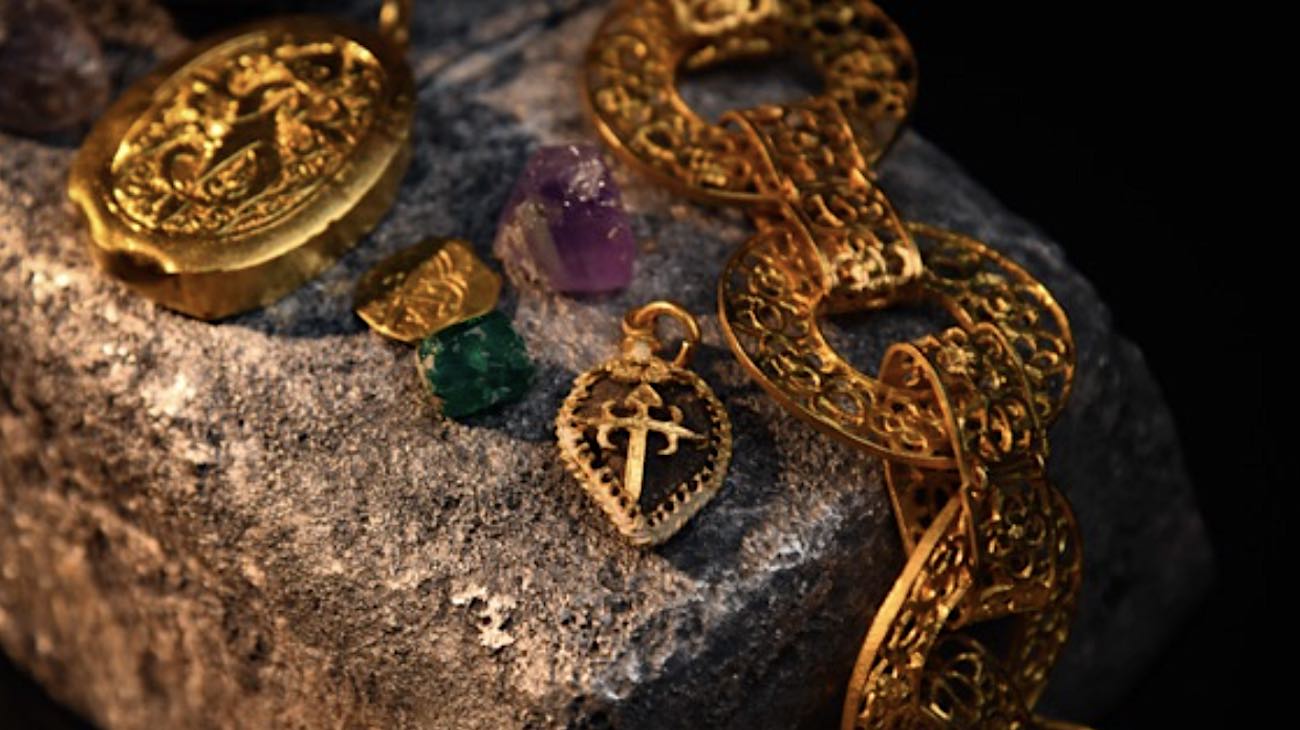Smile
Famed Shipwreck Leaves 3-Mile Treasure Trove: Mystery Uncovered

Quick Smiles:
- Allen Exploration uncovered a 3-mile scatter trail of treasures from the Spanish galleon Maravillas.
- Discoveries include silver coins, emeralds, amethysts, and gold jewelry, challenging the belief that the shipwreck was picked clean.
- Research suggests storms between January and June 1656 created the scatter trail rather than hurricanes.
The Spanish galleon Maravillas, which sank in the northern Bahamas over three centuries ago, was believed to have been completely salvaged. However, after four years of underwater archaeology, Allen Exploration has mapped an extensive trail of scattered treasure spanning over three miles (5 kilometers).
The Maravillas sank off the western Little Bahama Bank on January 4, 1656, loaded with silver bars, coins, and other treasures. The ship had been salvaged numerous times, with modern teams recovering around 30 tons of gold bars, coins, silver nuggets, jewelry, emeralds, iron anchors, and cannons between 1972 and 1991.
“Many experts believe the story of the Maravillas is over, that past salvage picked the old ship dry,” says Carl Allen, the founder of AllenX. “Now we’ve proven the wreck is not all vanished.”
Since 2019, AllenX has discovered a sprawling scatter of artifacts running southeast for over three miles from where the Maravillas originally sank. The finds include olive jars, silver pieces of eight, silver bars, emeralds, amethysts, and gold jewelry.
Dan Porter, the project’s offshore manager, says, “You might think that it was centuries of hurricanes and storms that broke up the Maravillas. But the archaeology has forced us to re-think that theory.”
He explains that if hurricanes had caused the scatter, the remains would be spread in all directions, but they are mostly focused in one trail running southeast.
Jim Sinclair, the project’s chief archaeologist, believes the treasures found by AllenX were scattered during the five months before Spanish salvage operations began in June 1656. The team thinks that two to three storm fronts created the main part of the Maravillas’ scatter trail between January and June 1656.
Carl Allen notes that historical accounts show the three stern cabins collapsed into the ocean, and the quarterdeck and sterncastle floated away, never to be seen again.
He adds, “Throw into the mix rampant smuggling: the Maravillas was carrying at least 100% contraband above the value of the cargo – and so much of the archaeology of the Maravillas is still to be explored and its history written.”
The team’s research has been published in Ocean Dispatches 4 for the Bahamas Maritime Museum in Freeport, which Allen founded in 2022 to display the treasure. AllenX now submits monthly written reports to the Bahamian government, presenting maps of finds, lists of discoveries, and research.

-

 Cute Animals6 months ago
Cute Animals6 months agoPuppy Love Patrol: Service Dog Swoons Over K9 Officer Neighbor
-

 Cute Animals10 months ago
Cute Animals10 months agoHugs, Hooves, and Happiness: Newborn Donkey Steals Hearts by Demanding Affection [Video]
-

 Cute Animals9 months ago
Cute Animals9 months agoWATCH: A German Shepherd’s Surprising Parenting Instinct for Lost Ducklings!
-

 Cute Animals11 months ago
Cute Animals11 months agoPetty Pup Pulls Off Hilarious Bone Heist [Video]
-

 Heroes8 months ago
Heroes8 months agoA Lost Dog’s Bark Leads to a Lifesaving Discovery
-

 Cute Animals10 months ago
Cute Animals10 months ago“Pure Love”: Adopted Rescue Dog Can’t Hide How Grateful He Is [Video]
-

 Cute Animals9 months ago
Cute Animals9 months agoAdorable Puppy Steals Hearts After a Tiring Swim [Video]
-

 Cute Animals10 months ago
Cute Animals10 months agoTiny but Mighty: Cat with Dwarfism Becomes Internet Star as Owners Adapt Backyard for Her Comfort